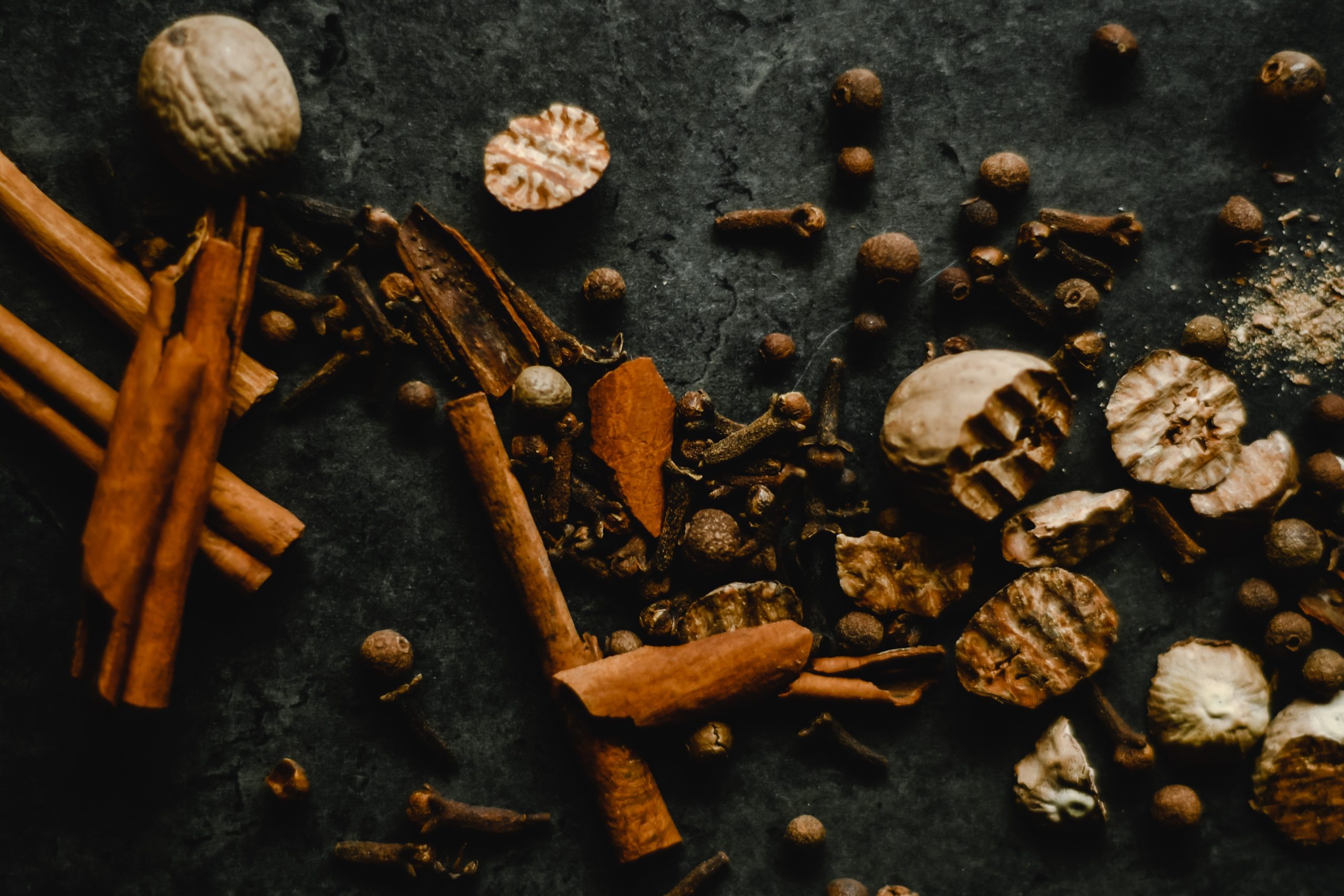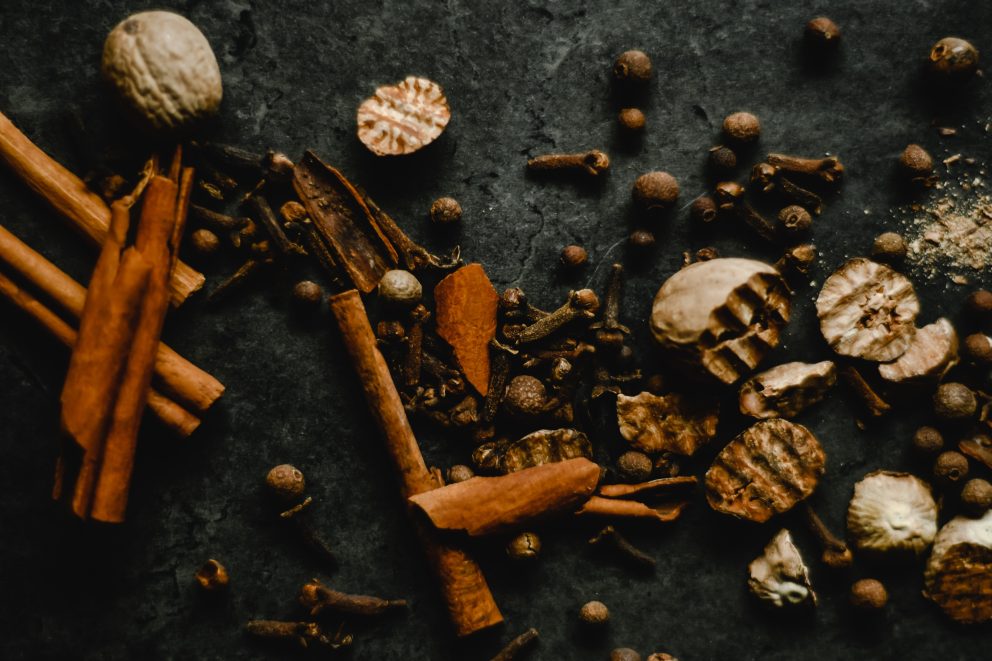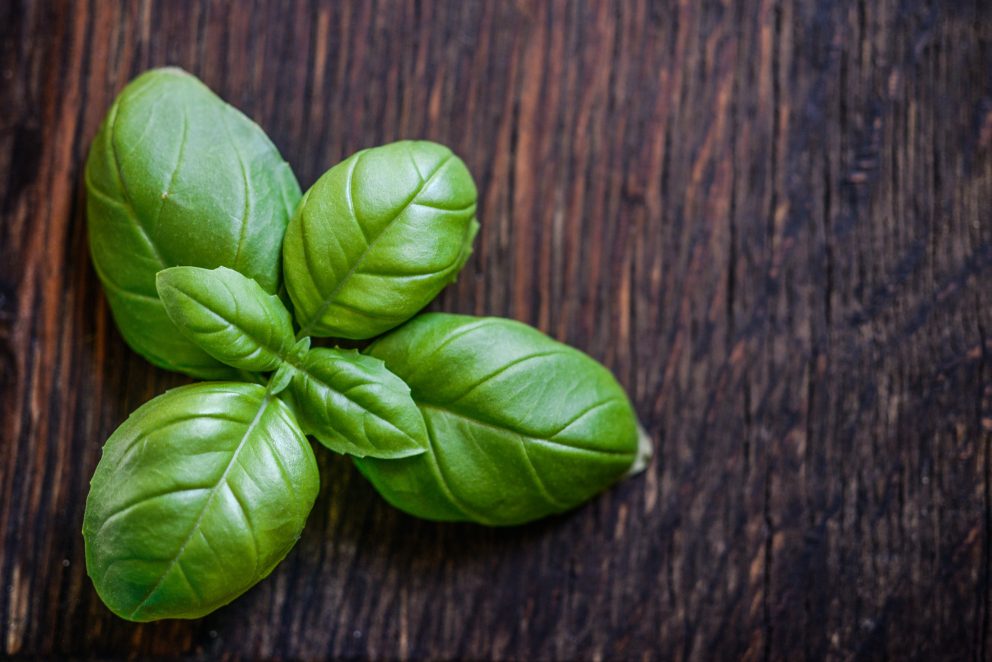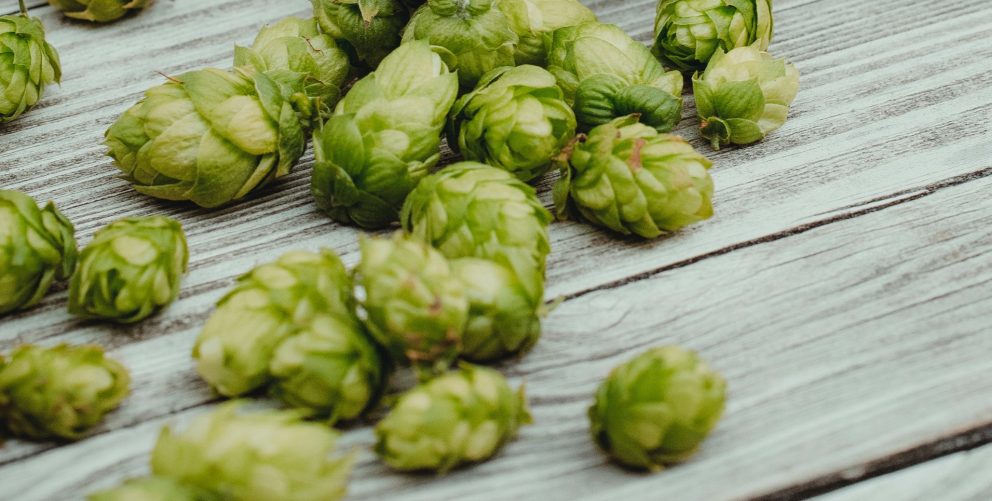
What is Caryophyllene? Trans-Caryophyllene & Beta-Caryophyllene Terpene Effects

Photo by Photo by Eva Bronzini
The stigma of “weed” has robbed us of many opportunities to explore the full scope of health benefits from the almost countless chemical compounds in the cannabis plant. Marijuana has countless beneficial phytochemicals (plant-created chemicals) that can do amazing things to and for the human body. One of these chemicals is caryophyllene.
Study of cannabis has helped scientists discover an entire endocannabinoid system which interacts with the hundreds of the chemicals in cannabis. It’s a system of the body like the nervous or endocrine system that when exposed to these chemicals turns up and down different body functions. Caryophyllene is one of the few terpenes that interact directly with our endocannabinoid system like THC and CBD.
What is caryophyllene? What does it do? How does this chemical interact with the human body and what are other plants that contain this specific terpene? This post will focus on the many benefits and biological impact of Beta-Caryophyllene. Plus, a list of strains rich in this terpene so you can explore its benefits for yourself.
But first, what exactly are terpenes?
What Are Terpenes?
Phytochemicals are chemicals made by plants to serve certain biological functions. Terpenes give plants their flavor and blend together to make their unique scent profile. When you’re at your local dispensary and smelling a strain and it has notes of lavender it might have linalool. These combine in cannabis to offer not just the same values of some plants but also some of the health benefits.
Many terpenes are antioxidants which are great for the body. Antioxidants help combat oxidative stress. Free radicals are molecules that are missing electrons. They try to net out their lack of electrons by stealing it from your body’s cells. They put your body under what is called oxidative stress which causes aging and disease. Antioxidants address these hungry free radicals to keep them from attacking your body.
What do terpenes do for plants? Terpenes help with a plant’s major life functions like attracting bugs and other pollinators or by turning off potential pests, or animals who might want to eat them. Terpenes can give plants a nasty or delicious taste. They can also add pigment to plants to help with UV protection or to be more enticing to pollinating bugs and small animals.
Part of why certain cannabis strains can smell like fruits, a little skunky or like their own unique blend of scents is the combination of the plant’s terpenes. Combined with cannabinoids and flavonoids these chemicals all interact with the human body in unique ways.
Currently, scientists consider the sum of cannabis chemicals’ effects rather than unique effects of each compound. This is called the entourage effect. These chemicals can have interactions with each other before they begin to impact your body functions.
For example, THC can cause euphoria and “the munchies,” while CBD can help reduce inflammation. Terpenes and flavonoids can impact how those cannabinoids affect you. For example, limonene can boost THC’s euphoric effects while the terpene pinene, found in black pepper, can help you stop being high if you have had too much cannabis. It tempers the anxiety some people get from cannabis. Now let’s focus on caryophyllene.
Apply for a Medical Marijuana Card Online Today
Join over 100,000 patients who have chosen Green Health Docs as their medical cannabis doctors. We have a 99% approval rate and offer a 100% money back guarantee!
What Is Caryophyllene?
Caryophyllene is one of the most common terpenes in cannabis. It’s known for giving pepper its spicy kick. It’s also so common in cannabis strains it is the terpene used to train drug-sniffing dogs. The dogs are trained to sniff out both caryophyllene a.k.a. beta-caryophyllene and caryophyllene-oxide which is a natural by-product of the cannabis drying process.
Besides its distinct spicy scent, caryophyllene is unique in being able to selectively engage with the human body’s CB2 receptors. This makes it similar to CBD in how it impacts the human body. It has quite a few benefits beyond the average terpene and some compare it to actual cannabinoids. You may be wondering what it even does?
What Does Caryophyllene Do?
Caryophyllene is able to bond to CB2 receptors of the human’s endocannabinoid system. We have an entire system of our body that engages with the chemicals in cannabis which can turn up and down different body functions. For example, THC bonds to CB1 receptors and can turn up euphoric feelings. CBD can attach to CB2 receptors turning down inflammation.
CB1 receptors are in the brain and spinal cord. CB2 receptors are in many of our other body parts. The greatest benefit of caryophyllene engaging with CB2 receptors is it can reduce inflammation, help alleviate pain, and encourage relaxation. This results in caryophyllene having quite a few health benefits that we’ll review at length including it being antimicrobial, a strong antioxidant, and more.
What Is Beta-Caryophyllene?
Beta-Caryophyllene is a more scientifically correct name for caryophyllene. They are often used synonymously because there is another version of caryophyllene called Trans-Caryophyllene. However, whenever you hear the term caryophyllene it is mostly referencing the chemical beta-caryophyllene.
Throughout the rest of this post we’ll discuss the various benefits and health interactions of beta-caryophyllene.
Caryophyllene Pronunciation
From the looks of it, like many chemical compounds, the name of this terpene can look like a mouthful that’s hard to pronounce. Simply put, it’s pronounced: ka-riou-fai-len
Structure Of Caryophyllene
The chemical formula for caryophyllene is C15H24 and has a molecular weight of
204.35 g/mol. It is known for having a cyclobutane ring, as well as a trans-double bond in a 9-membered ring which are both rare qualities in natural chemicals.
High Caryophyllene Strains
While caryophyllene can seem ubiquitous, some strains can have high concentrations of this terpene. Strains that tend to be caryophyllene heavy include the following:
- White Widow
- OG Kush
- Sherbert
- GSC
- Bubba Kush
- White Yoda Auto
- Purple Punch
- Sour Diesel
- East Coast Sour Diesel
- Chemdog
- Royal Cookies
- GG#4
- Do-Si-Dos
- Candyland
- Death Star
- Original Glue
- Cookies and Cream
- Gelato
- The White
- Master Kush
The Caryophyllene Smell
According to The Good Scent Company, the scent of “caryophyllene is softly spicy, woody, dry, and elegant.” It is described by Joseph Colbourne as “that sparkle in the scent profiles of clove, pepper, and also many florals. Facets of cananga, cinnamon, calamus and copaiba can be detected by my nose.”
It’s also been known to have notes of driftwood. When distilled into its base chemical form it’s been described as “midway between odor of cloves and turpentine.
The Caryophyllene Taste
Caryophyllene is known for its spicy notes and it gives the top note to black pepper. It has an herbal spiciness that offers hints of wood. It’s a common sweet yet spicy flavor that follows through the flavors of cinnamon, black pepper, and allspice. It’s also a common flavor between both rosemary and clove oil.

Photo by Monicore
Foods With Caryophyllene
In addition to cannabis, like many other terpenes, caryophyllene can be found in many other popular foods and plants including:
- Basil
- Rosemary
- Cinnamon
- Oregano
- Cloves
- Lavender
- Black Pepper
- Black Caraway
- Broccoli
- Hops
Caryophyllene Effects
The Caryophyllene terpene’s effects are pretty numerous. Given that it is both a terpene and it has the cannabinoid ability to connect to your body’s CB2 receptors giving it a whole host of other capabilities healthwise.
Trans-Caryophyllene Terpene Effects
While slightly less common than beta-caryophyllene, trans-Caryophyllene does have a whole host of potential health benefits.
One unique effect is that it can help smooth tracheal muscle tissue to relax. There are certain potential scientific benefits to this given its antispasmodic activity. Antispasmodics usually help with muscle relaxation and anxiety. It’s also effective on intestinal smooth muscle tissue and has strong antimicrobial qualities.
Trans-caryophyllene also can engage with CB2 receptors making it a solid anti-inflammatory. It has strong antioxidant potential meaning it can help counteract oxidative stress by tackling free radicals. It also has analgesic or pain-relieving properties.
Caryophyllene helps to improve cold tolerance at low ambient temperatures. Wild giant pandas frequently roll in horse manure, which contains
Beta Caryophyllene Effects
Beta-caryophyllene is popular for its many different health benefits One of the most random effects of beta-caryophyllene is that it’s the reason why giant pandas roll around in horse manure. The beta-caryophyllene and caryophyllene oxide in the manure inhibits the effect of cold on the transient receptor potential melastatin 8 (TRPM8), an cold-activated ion channel found in mammals.
Beta-caryophyllene has the same anti-inflammatory, antimicrobial, antibacterial, and antioxidant properties as trans-caryophyllene. It’s also said to be neuroprotective as its anti-inflammatory benefits can extend to brain tissue and help with brain swelling during strokes. It can also help reduce gut inflammation.
Antimicrobial-wise studies show it can help fight bacterial infections and offers a potential healthy alternative to drugs like chlorhexidine. It can also encourage the decrease of microorganisms like Streptococcus pneumonia, Haemophilus influenza, and E. coli.
Health Benefits Of Beta-Caryophyllene
Beta-caryophyllene has been the basis of quite a few studies both into its cannabinoid activity and its presence in many essential oils and homeopathic remedies. It was even studied to see its effects on Covid-19.
Beta-caryophyllene is a potential therapeutic agent to prevent and treat Osteoporosis. It encourages osteoblastic mineralization which lends itself to stronger bone building b while decreasing osteoclastogenesis or the breakdown of bones.
Beta-caryophyllene can help with cancer. In studies performed on human prostate and breast cancer cells it was shown to promote cancer cell death, or apoptosis. It both inhibited tumor growth and encouraged cancer cells’ mitochondrias to over-produce reactive oxygen species (ROS) which can lead to the destruction of the cell itself.
It was tested to see how it worked in conjunction with the other terpene alpha-humulene and the cancer drug paclitaxel. Beta-caryophyllene helped facilitate the spreading of paclitaxel throughout the body.
It’s such an effective analgesic, that beta-caryophyllene can be used as a local anesthetic.
In lab studies of depression and anxiety it was shown to help with both even when the test subjects were placed under extreme stress. It has potential to be incorporated into anti-anxiety and anti-depression medication.
Beta-Caryophyllene Terpene Effects on Cannabinoids
Beta-caryophyllene not only affects the body but it can be pretty rigorous with regards to its contributions to the entourage effect. It engages with other cannabinoids and terpenes. For example, when interacting with THC it can reduce and even counteract THC’s psychoactive effects. This means that it can help if you’ve ever gotten too high. Interestingly enough, the combination can help prevent gastric issues.
When combined with CBD which also impacts CB2 receptors there is a rather unique effect. It was found to help with alcohol addiction because of how they engage with alcohol and the body. It has potential to be a treatment for alcohol use disorder (AUD).
When combined with the terpene humulene, beta-caryophyllene can expand its anti-inflammatory properties and serve as a potential treatment for arthritis, bursitis, and fibromyalgia.

Photo by Markus Spiske
Caryophyllene Vs Myrcene
Caryophyllene and the terpene myrcene have so much in common they can often be confused for each other. Let’s review their similarities:
- Both have a beta isomer. That’s right, there’s also a beta-myrcene.
- They are very common. Myrcene is the most common terpene in all US strains of cannabis. Caryophyllene is also highly common. Again, it’s used to train weed-sniffing dogs
- Both can cause relaxation, sedative effects, and are helpful anti-inflammatories.
- Both are found in black pepper, hops, cinnamon, basil and oregano.
One major difference is that myrcene does not directly engage with cannabinoid receptors. However, it was found in study that myrcene can help with the affinity for cannabinoids to CB1 receptors and help with their permeability with blood.
When combined they can increase the sedative and relaxation effects of each other.
One scientific study found when they’re both combined with limonene it had a strong anti-inflammatory, anti-catabolic and pro-anabolic effect that helped slow down cartilage destruction. This makes it a potential treatment for osteoarthritis.
Final Thoughts
As cannabis becomes legal across more states throughout the United States, the countless benefits of terpenes like beta-caryophyllene will only find more footing in medicine. After all, so many of these compounds exist in homeopathic remedies and are often the reason we consume certain foods or use essential oils.
If you want to explore the benefits of terpenes on your body, why not get your medical marijuana card. With the help of Green Health Docs, the experience can be fast and simple. With a medical marijuana card, not only do you get to use cannabis products but often find a whole host of other benefits.
 This article has been reviewed by Dr. Anand Dugar, an anesthesiologist, pain medicine physician and the founder of Green Health Docs. Graduating from medical school in 2004 and residency in 2008, Dr. Dugar has been a licensed physician for almost 20 years and has been leading the push for medical cannabis nationwide.
This article has been reviewed by Dr. Anand Dugar, an anesthesiologist, pain medicine physician and the founder of Green Health Docs. Graduating from medical school in 2004 and residency in 2008, Dr. Dugar has been a licensed physician for almost 20 years and has been leading the push for medical cannabis nationwide.
